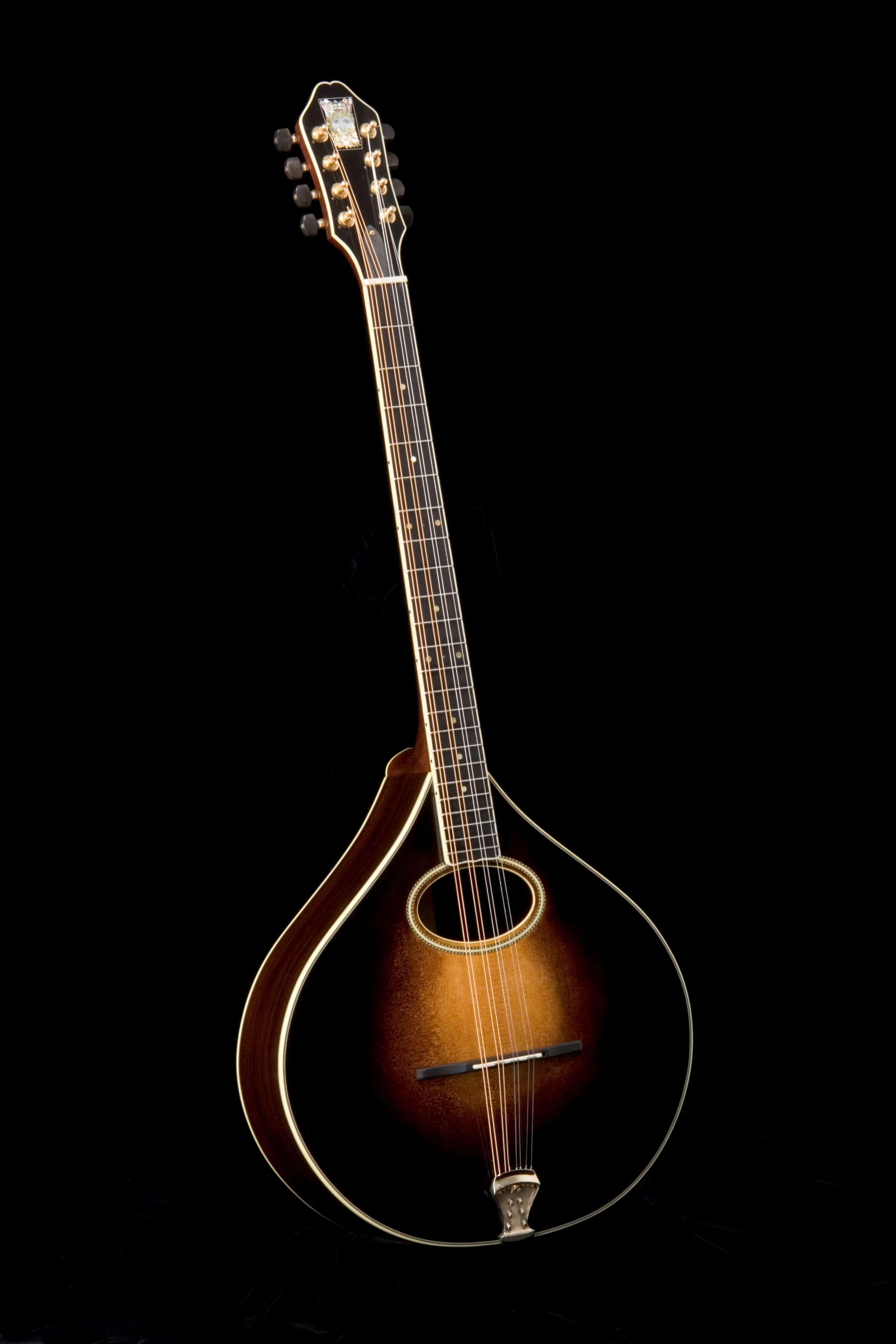What do You Call These Things?
There is some disagreement over the naming of these instruments due to their variability. When I first started building them, I took a look at what was on the market at the time and made an attempt to fit what I was doing with what was already out there.
Standard model designations work as follows:
Scale length:25.5” (64.7 cm) is an Irish Bouzouki, designated with the letter B.
22.75” (57.7 cm) is an Octave Mandolin, designated with OM.
20.25” (51.4 cm) is the shortest scale OM designated with an additional 's' as in OM-Is.
A 10-string version of either of the above is a Cittern designated with the letter C.
Body style is designated with roman numerals.
Style I is a 14” (35.6 cm) Teardrop shape.
Style II is a 14” (35.6 cm) 2-point shape.
Style III is a 15” (38.1 cm) Teardrop shape
Body depth varies with Citterns and bouzoukis being the deepest while Octave mandolins are more shallow, but variations on these standards are possible: A bouzouki player might want a brighter sounding instrument, so the OM body depth could be used with the longer bouzouki scale. Or, if a big bass is desired with a shorter scale, the OM scale could be used with the deep B-I or B-III body.
Irish Bouzouki



B-I
Our original Irish Bouzouki designed for Michael Holmes of Dervish. It features a 25.5" scale, and a deeper body which produce an instrument with superior sustain and low end balanced with clear, bell like midrange and highs.
B-II
For those looking for something a little different in body design, we offer the B-II. This model was inspired by the traditional, graceful mandolins created earlier in the 20th century by makers like Vega, Gibson and Martin. The B-II has proven itself as a great lead bouzouki, with solid highs and midrange balanced well with rich woody bass tones.
B-III
The largest model in the traditional teardrop shaped bouzouki series, the B-III (affectionately known by some as the "B-52") is great for accompaniment in large groups and sessions. This was the second model originally designed for Michael Holmes and, at 15" across and 4.5" at the tailblock, its projection, sustain and low end power have made it one of our most popular offerings.
Octave mandolin


OM-I
A traditionally styled octave mandolin with a deeper body lends itself equally well to lead work and accompaniment
OM-II
The OM-II offers ease of playing and a cutting midrange great for playing tunes along with the 2 point body styling.
OM-III
Several clients asked for this instrument as a a custom order and it's now included as the third OM model. With the big Style III body and the 22.75" scale it provides a great combination of playability and big low end. We can also make the body less deep for more balance between bass and treble.
Cittern



All body styles are available as 10 string citterns with either a short scale (22.75") usually with the 5th treble pair of stings tuned a high A or G or a long scale (25.5") usually with the 5th bass pair tuned to a low D or C. Lots of other tunings are used with these and other scales are available. Feel free to contact me to discuss the possibilities.
Celtic Mandolin
M-I Mandolins
Mandolin models feature a 14.5" scale and a slightly deeper body for added sustain and ring. Bluegrass players won't be breaking down the door to get these but the rosewood version has great depth of tone and can produce a pretty nice bluegrass "bark".
Mandola
Mandolas are available in two scale lengths on a 12" body: a traditional 17.25" which is usually tuned CGDA and a 20.25" long scale which can be tuned in a number of ways and can also be converted to a short scaled octave mandolin if you are looking for a more midrange lead instrument.




